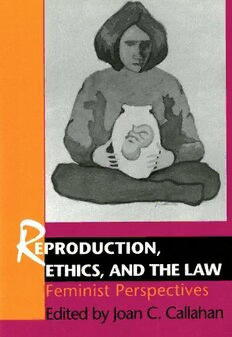
Reproduction, ethics, and the law: feminist perspectives PDF
01995·0.712 MB·English
Most books are stored in the elastic cloud where traffic is expensive. For this reason, we have a limit on daily download.
Preview Reproduction, ethics, and the law: feminist perspectives
Description:
"Scholars already saturated with moral commentary on new reproductive arrangements are in for a stimulating surprise. For, this volume breaks new ground, scrutinizing their impact at a more penetrating level and challenging the terms of the dominant debate.... It should set a standard for further work and receive the attention of mainstream thinkers and policy makers that it so richly deserves." -- Human Studies"... a valuable contribution to the literature in an important and rapidly evolving area of law and applied ethics." -- Ethics"... virtually every essay is thought-provoking and well-informed, and together they address just the topics you'd want to see covered -- as well as a few you might not have thought of." -- Medical Humanities Review"... extremely interesting reading for all those who are involved in, or wish to know more about, the moral, social and policy consequences of new reproductive technologies." -- Biosocial Science"This thought-provoking collection of essays addresses moral and legal questions revolving around modern human reproduction.... an invaluable resource for any family law practitioner." -- The Women's Advocate"Editor Callahan presents a fascinating look at the facts, facets, and legal effects of modern technology on reproduction.... A work that provides insight on all issues concerning reproduction." -- Choice"[The book] is a valuable contribution to the literature in an important evolving area of law and applied ethics." -- Ethics"... displays the richness of feminist scholarship. It points the way for a fuller appreciation of the varied voices of feminist analyses in many other areas." -- Journal of Health Politics, Policy and Law"... a comprehensive, compelling and carefully researched volume. This is applied feminist ethics at its very impressive best." -- Journal of Medical EthicsEssays address moral and legal quandaries related to human reproduction, adding to the feminist dimension of the public discussion of these issues, including: new complexities in contraception and abortion technologies; frozen embryos, unwed fathers, and the legal definition of parenthood; and the use of fetal tissue.
See more
The list of books you might like
Most books are stored in the elastic cloud where traffic is expensive. For this reason, we have a limit on daily download.
